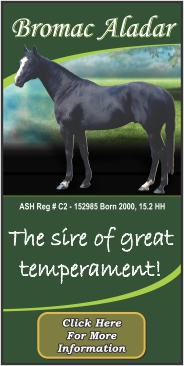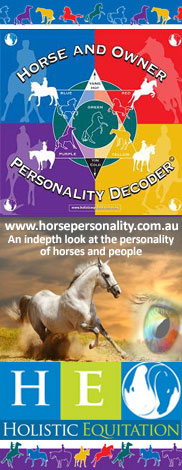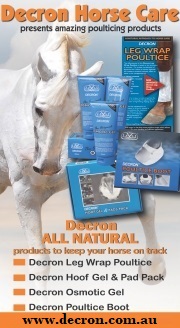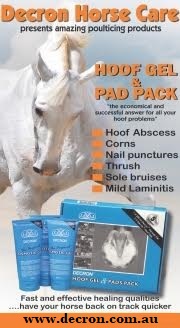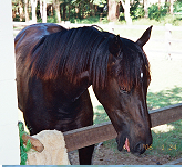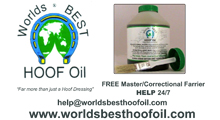By: Kenneth L. Marcella, DVM
DVM News magazine – the magazine of Veterinary Medicine
Immunotherapy was predicted to be one of the most rapidly expanding areas of medical science in this decade.
Proposed advances in our ability to manipulate the protection offered by the body’s own immune system were going to make humans and animals far healthier and were promising to increase both the length and quality of life.
Immune agents were going to be our new defenses against those microorganisms that no longer responded to antibiotics and diseases from allergies to cancer were going to be subdued by this new field.
Slow in coming
To date, however, those advances have been slow in coming. We have not been able to manipulate the body’s own defenses as planned and we have few effective immune stimulants.
Positive research data has been piling up concerning the most promising immune agent in years, though, and immunologists may be finally making good on their earlier predictions.
Transfer factor, as this new immune compound is being called, may be the long-awaited “next step” and it may be everything that was promised.
Richard Bennet Ph.D., an infectious disease immunologist writes, “It is our ability to create a really healthy immune system that I think represents the greatest potential gains in health in the world.”
It is the immune system, after all, which provides humans and animals with the ability to recognize and remember potentially harmful foreign substances such as bacteria and viruses. The immune system allows us to then respond to these threatening invaders in our systems.
Devastatingly familiar
The consequences of conditions of suppressed or damaged immune systems are devastatingly familiar to veterinarians.
Arab foals with combined immunodeficiency complex and older horses with chronic laminitis due to Cushing’s disease-related effects are but two such examples. Respiratory problems in young foals, allergies, skin infections, and hoof wall diseases are other problems that can also be related to immune system dysfunction.
A new agent that would vastly improve immune function in horses would certainly warrant some attention. Transfer factor promises to be this new agent. It is a component of colostrum and is produced to be used as a powder added to the diet.
Structure, function
To understand what this colostral derivative may potentially mean to veterinarians and horses, it is necessary to briefly review the structure and function of the immune system.
The body has two principal immune defense systems: humoral and cellular. B-lymphocytes in the liver, spleen, lymph nodes and bone marrow produce plasma cells that in turn produce antibodies in the gamma globulin fraction. These immunoglobulins can potentially recognize huge numbers of antigens. This is the basis of humoral immunity. Humoral immunoglobulins are primarily designed to fight bacterial infections.
Lymphocytes that populate the thymus become responsible for cellular immunity. These cells produce structures called lymphokines that mediate delayed hypersensitivity or allergic reactions. They are responsible for rejection of transferred foreign tissue and for the recognition and rejection of tumor cells.
The cellular immunity system is responsible for defense against infections due to viruses, fungi and some types of bacteria and cancers. Transfer factor stimulates both portions of the immune system.
In the beginning
In 1949, Dr. H. Sherwood Lawrence, a researcher working on tuberculosis, found that he could transfer immunity between patients using fractionated white blood cells. The key ingredient was a part of the lymphocyte cell, and Lawrence called this component “transfer factor.”
This discovery was not actively pursued for nearly 30 years until the late ’80s. At that time colostrum and milk were discovered to contain significant amounts of transfer factor. The exact mechanism of action of transfer factor has never been determined but it is now known that transfer factor is a lymphokine. The two most notable lymphokines are interferon and interleukins.
These lymphokines are protein messengers thought to be released by antigen-sensitized lymphocytes. They play a role in macrophage activation, lymphocyte transformation (the process of precursor cells becoming B and T cells), and in cell-mediated immunity. Transfer factor is one of the most potent messengers and has three distinct effects on the immune system.
Recognizes antigens
Transfer factor helps the body recognize antigens.
Dr. M. Metz, a veterinarian consulting for 4LifeResearch, the company which has the patent for extracting transfer factor from colostrum, points out that 200 mg (one capsule) of transfer factor has the potential for recognizing at least 100,000 pathogens. Metz adds that not only can transfer factor be specific for an individual antigen that a lymphocyte is exposed to, but “transfer factor can also stimulate a multivalent response.” In this type of response, transfer factor activates lymphocytes to several strains of an organism. “This is the really exciting part of transfer factor from a practicing veterinary standpoint,” says Metz.
4LifeResearch has found that by exposing cattle to various bacteria and viruses they can produce transfer factor that will stimulate immunity to other related strains of bacteria and viruses that are much more pathogenic to other species. “The other really exciting aspect of transfer factor,” says Metz, “is the time sequence.”
Most types of delayed hypersensitivity immunity, such as that seen with vaccine use, take 10 to 14 days to develop. Transfer factor, according to Metz, activates that same immunity in 24 hours!
Natural killer
Transfer factor is also a natural killer cell inductor. These cells are non-specific attack cells that seek out and destroy infected or malignant cells and cells infected by viruses.
Transfer factor increases natural killer cell activity five times over normal rates and it is non-species specific. It is believed that this aspect of transfer factor is related to the significant improvements seen in certain cancer patients that have taken this product. Multiple sclerosis patients have also shown improvements.
Transfer factor in cats, dogs, horses, cows and humans is virtually identical structurally and completely identical functionally. This has helped in the production of this product since cows can produce large quantities of colostrum that is then used for extraction of transfer factor.
A number of companies are producing colostrum and claiming that these products contain transfer factor. While this is true, only 4LifeResearch has the exclusive patent on the process to extract only transfer factor. This process allows for the concentrated and purified production of transfer factor.
Suppresses immune function
Transfer factor is also a suppressor of immune function.
It is paradoxical that the same product can both stimulate and suppress immune function but transfer factor function depends on the specific antigens and the status of the immune response. Transfer factor can stimulate the release of T suppressor cells when “down” regulation is necessary due to over activity. Autoimmune diseases, chronic obstructive pulmonary disease (COPD) and allergic reactions are situations where the body’s own immune response has over-responded to antigenic stimulation. Transfer factor works in these situations because it can slow down this overactive response.
Obvious advantages
While discussions of the immune system tend to be fairly technical, the practical advantages of a potent new immune stimulating treatment are obvious. The ability to stimulate the horse’s body to attack and destroy bacteria and viruses will reduce the amount and types of antibiotics that may need to be used by veterinarians. It is important to try to retain those antibiotics that are available to veterinarians and to use them in a way that will maintain their effectiveness for as long as possible.
If veterinarians can stimulate a better immune response to respiratory bacteria, skin pathogens and various viruses, then the need to use antibiotics is lessened. If transfer factor can produce such boosts in immunity in 24 hours then the potential for use as a pre-travel protectant, or a post-exposure treatment is tremendous.
Horses suffering from other diseases such as Cushing’s disease, laminitis, colitis, cancers ranging from sarcoids to melanomas and reproductive conditions such as chronic metritis, may all benefit from transfer factor use. This product may indeed be the long-awaited next step and the field of immunotherapy may finally fulfill its promise.
Author Info
Kenneth L. Marcella, DVM
Contributing Author
Dr. Marcella, a 1983 graduate of Cornell University’s veterinary college, was a professor of comparative medicine at the University of Virginia. His interests include muscle problems in sport horses, rehabilitation and other performance issues.
Charles W. Brown, DVM – “My colleagues and I have found










